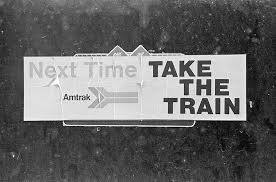The Runaway Amtrak Train to Duluth
 Another train that most Minnesotans have never heard of but will be expected to pay for has left the station. The plan to restart a train between the Twin Cities and Duluth-Superior has been on the state transportation planners’ drawing board for years.
Another train that most Minnesotans have never heard of but will be expected to pay for has left the station. The plan to restart a train between the Twin Cities and Duluth-Superior has been on the state transportation planners’ drawing board for years.
Never mind that the last train to Duluth, the North Star, failed in the 1980s. Never mind that Amtrak would pick up where it left off with North Star and be in charge of operating the line. It’s back to the future.
Despite no long term funding in place to build or operate it, MnDOT and local government officials in the Northern Lights Express Passenger Rail Alliance continue to move full steam ahead on a train once estimated to cost more than $1 billion. All of which raises the question of who approved this process that’s stacked against the taxpayer in the first place?
“We could run 90 mph right now on the track structure itself,” said Frank Loetterle, project manager for MnDOT’s Passenger Rail Office in St. Paul. “It is in very good shape.”
All things being favorable would put the NLX in operation by 2020, organizers say. But for the dream to further materialize, big developments still need to unfold.
Just one technicality. Who pays for it? That detail hasn’t gotten in the way of Senators Amy Klobuchar and Al Franken supporting NLX. Now Eighth District Cong. Rick Nolan has gotten on board, inviting the rail group to pay him a visit in Washington to explore federal funding.
When the federal government’s $305 billion Fixing America’s Surface Transportation Act was signed into law by President Barack Obama in 2015, it included a funding mechanism for rail lines in addition to primary projects such as bridges and highways.
“But there’s no money in it,” Loetterle said of the FAST Act’s funding arm for rail. “I like to tell people they created a bucket but didn’t put anything in it.”
State taxpayers will be expected to help fund MnDOT’s bucket. But what about the cities and counties pushing for the rest of us to pony up? That’s the only option not on the drawing board.
“The NLX is to rail as interstate is to roads — it’s inter-city connectivity and it should not be local communities that pay for it,” Loetterle said. “It should be paid for by the federal and state governments in a 80-20 or 90-10 ratio, and we’ve been taking that approach from the beginning.”
Elissa Hanson, the Duluth City Council member who chairs the rail alliance, may oppose city and county funding to build NLX but she’d happily pony up for a ticket. Of course, tickets will be under-priced and subsidized by at least 30 percent by taxpayers.
It’s a price Hansen would gladly pay. As a private business owner in addition to being the person tasked with bringing the project to fruition, Hansen gives NLX its strongest kind of advocate — one who would readily use the project she’s getting ready to pitch for dollars.
“I commute back and forth to the Twin Cities on a regular basis as do many of my counterparts,” she said. “I would absolutely, one million percent, pay for that and be able to work while I’m commuting.”